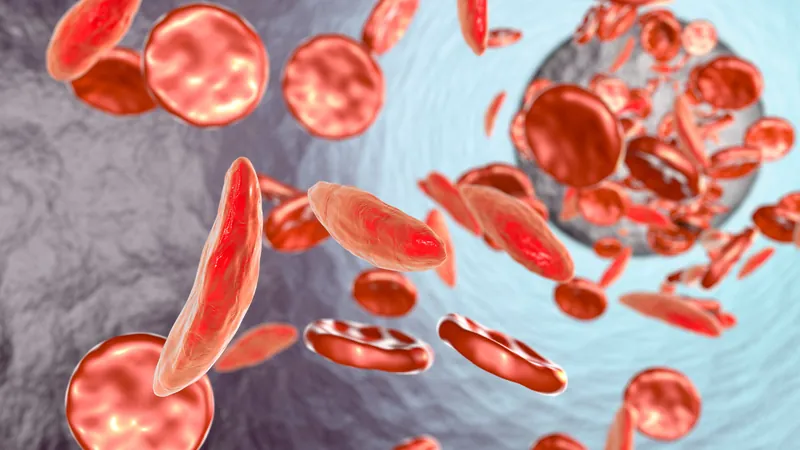
Menstrual Cycle May Heighten Pain Crises in Sickle Cell Disease
2025-04-14
Author: Jia
New research reveals that the menstrual cycle may worsen painful episodes for women suffering from sickle cell disease (SCD). These pain crises, known as vaso-occlusive episodes (VOEs), occur when crescent-shaped red blood cells block blood flow, leading to intense pain and potential hospitalization.
Unraveling the Connection Between Menstruation and Pain Crises
SCD is a genetic disorder characterized by abnormally shaped red blood cells, which can cause anemia, increased infection risk, and organ damage. Women with SCD are more prone to frequent and severe VOEs compared to their male counterparts. Recent studies indicate that these painful crises often coincide with certain phases of the menstrual cycle, particularly during menstruation, though the underlying reasons have remained elusive.
Groundbreaking Findings on Inflammation
In a study published in the journal *Blood Vessels, Thrombosis & Hemostasis*, researchers from the University of Pennsylvania found a significant correlation between inflammation and the menstrual cycle. They discovered that levels of C-Reactive Protein (CRP), an inflammatory marker, rise in women with SCD during the early part of their menstrual cycle.
Dr. Deva Sharma, an expert in hematology, expressed enthusiasm for the growing focus on reproductive health in SCD research, highlighting the urgent need for equity in care and advocacy for affected women.
Understanding the Impact of VOEs
Menstrual-related complications, including VOEs, impose a heavy burden on women with SCD, disrupting everyday activities like bathing, dressing, and working. Severe VOEs not only cause pain but can also lead to long-term organ damage.
Chronic inflammation is a hallmark of SCD, marked by consistently elevated levels of inflammatory cells and proteins such as CRP, which can spike during painful episodes.
Hope for Targeted Treatments
This study is notable as it demonstrates increased CRP levels during the follicular phase of the menstrual cycle, opening doors for tailored pain management strategies for women with SCD. Potential interventions, like hormonal contraceptives that reduce menstruation, could help lower inflammation levels.
Lead researcher Dr. Jessica Wu emphasized the critical need for comprehensive data on how SCD manifests in female patients. This knowledge can empower women to better anticipate and manage their pain.
Looking Towards the Future
The researchers aim to expand their study population and further explore how menstrual cycles impact other SCD markers. Dr. Sharma expressed hope that this research will influence treatment standards globally, particularly as SCD predominantly affects individuals in low- to middle-income countries.
As knowledge progresses, the hope is to alleviate the pain associated with menstruation for those battling sickle cell disease.


 Brasil (PT)
Brasil (PT)
 Canada (EN)
Canada (EN)
 Chile (ES)
Chile (ES)
 Česko (CS)
Česko (CS)
 대한민국 (KO)
대한민국 (KO)
 España (ES)
España (ES)
 France (FR)
France (FR)
 Hong Kong (EN)
Hong Kong (EN)
 Italia (IT)
Italia (IT)
 日本 (JA)
日本 (JA)
 Magyarország (HU)
Magyarország (HU)
 Norge (NO)
Norge (NO)
 Polska (PL)
Polska (PL)
 Schweiz (DE)
Schweiz (DE)
 Singapore (EN)
Singapore (EN)
 Sverige (SV)
Sverige (SV)
 Suomi (FI)
Suomi (FI)
 Türkiye (TR)
Türkiye (TR)
 الإمارات العربية المتحدة (AR)
الإمارات العربية المتحدة (AR)